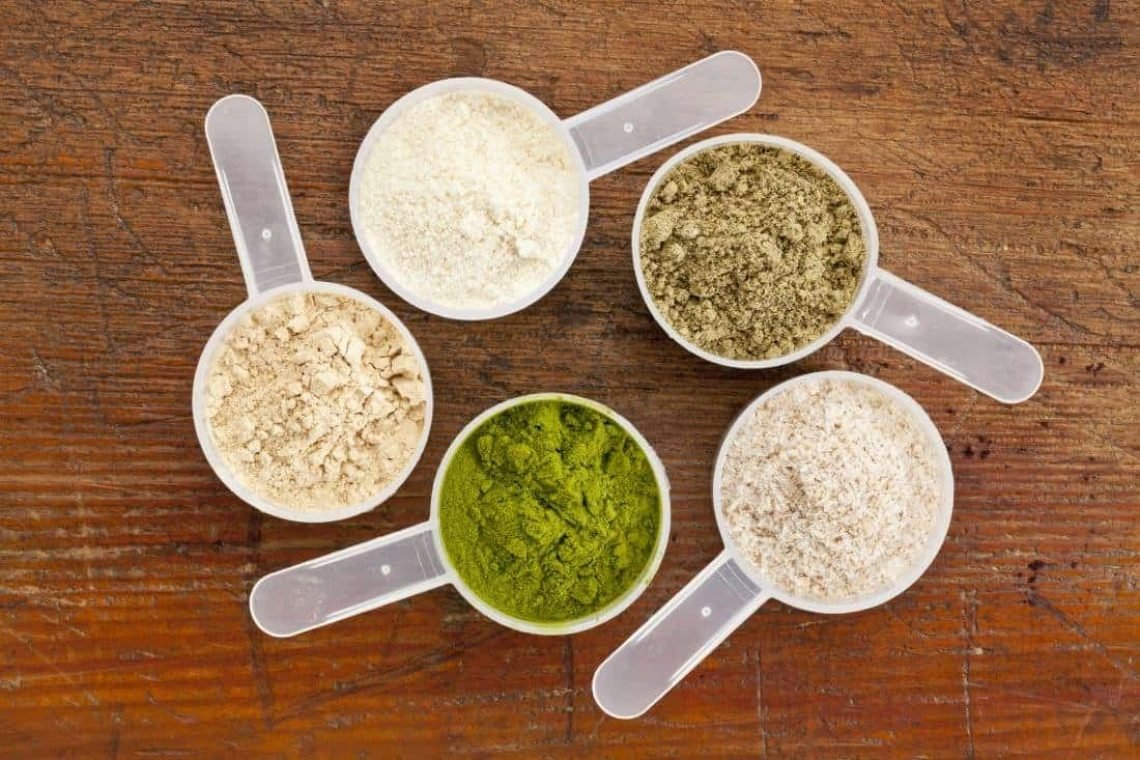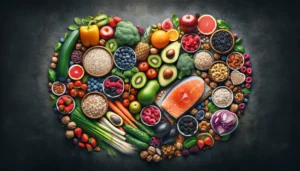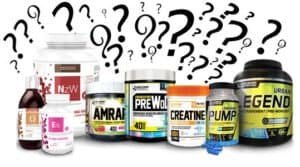Regardless of whether you’re into sport or not, you’ve probably heard about protein powders. It’s an industry valued at 24 billion and is set to double in the next 7 years. That’s right, it will be worth 52 billion by 2030! Remarkable.
It can be hard to know how to choose a protein powder with so many now available. So, let me go through some of the basics with you.
Quality Of The Protein
Generally, people pick a protein with the goal of building muscle, increasing strength and adapting their muscle to better suit their sport/ activity. If they are your goals too, you need to consider the quality of the protein.
Although people may immediately think I’m talking about the freshness of the protein, what I’m actually talking about is its amino acid profile. Proteins are like pearl necklaces. Each pearl is an amino acid. Each necklace is unique in terms of what pearls it is made up of, in what order they are in and how many there are on the necklace.
The quality of the protein is based on;
- The essential amino acid content
- The leucine content.
- The bioavailability – how easily digested and absorbed it is
Let me explain further. Amino acids are not created equal. Some matter more than others. There are 20 different amino acids in total, of which 9 are considered to be ‘essential amino acids’, and of the 9 essential amino acids there is 1 especially important one in muscle building called leucine.
If you’re simply trying to increase your overall protein intake and wish to use protein powder to help you achieve this, then perhaps this doesn’t matter all that much. Choose a protein powder that you enjoy consuming.
If you’re hoping to influence the speed and capability of your body to make new muscle after eating/drinking protein, then sit tight. You need to understand the science to make the best choice for you.
Essential Amino Acids
As I have said, there are 9 of these guys. They must be provided by your diet as the body can’t make them hence why they’re referred to as ‘essential’. To stimulate muscle building to its fastest pace, you must consume enough of them when you eat. ‘Enough’ essential amino acids is usually about 10 grams. If you’re mindful of your protein intake, you will probably reach this first goal. However, as the essential amino acids are found in greater supply in animal proteins, it may be trickier with plant protein consumption and warrant a little more focus. Soy / soya protein is an option if following an exclusively plant based diet.
Leucine
Leucine is one of the 9 essential amino acids. Leucine and other branched-chain amino acids make up about one third of muscle protein. Not only is it a building block of protein/ muscle like the other 8, but it is extra special as leucine is the switch that turns on muscle building. For this reason it’s sometimes referred to as the ‘anabolic trigger’. It is also an anabolic mediator as it increases the transport of amino acids into muscle.
After we exercise there are significant decreases in levels of leucine (11-33% after cardio, 5-8% after high intensity training and 30% after strength exercise). To switch on muscle building to its fastest pace, we need about 3 grams of leucine. You need more leucine at each meal to maximally stimulate your muscles the older you are and the less exercised your body is.
How do you consume enough leucine?
1 scoop of whey protein provides enough leucine.
Well, that takes a little bit of education. As you can see, you would need to consume a ridiculous amount of peanut butter to eat 3 grams worth of leucine! Check your plant-based protein powder to see if it contains at least 2.5 g of leucine (some may have it added). At other meals, consuming foods like firm tofu, beans like navy beans, peanuts, seeds like pumpkin (you can get pumpkin seed protein powder), sesame (or tahini), and hemp (available as a porridge topper) as well as lentils, oats (porridge and energy bars) and spirulina (i smoothies and baking) will help.
| 3 grams of leucine is found in | |
| Whey | 27g (~1 scoop) |
| Casein | 35g |
| 1% cottage cheese | 1 cup |
| Chicken | 1 breast |
| Tuna | 180g |
| Peanut butter | 12 tbsp |
| Black beans | 2.5 cups |
| Firm tofu | 1.5 cups |
| Beef | 165g steak |
| Peas | 180g |
| Eggs | 5 |
| Milk | Nearly 1 litre! |
The Bioavailability
Some proteins are digested quickly and some are digested slowly. Before and after exercise training, you want all nutrients, including protein, to be digested quickly. The rest of the time, you want your nutrients to be digested slowly.
Whey protein is digested quickly while casein protein is digested slowly. If you have whey protein powder on its own mixed with water you will digest it quickly.
The current evidence therefore suggests whey protein is best after training as it leads to a quick release of protein into the bloodstream.
This doesn’t mean there are no uses for casein protein powder. Casein protein powder is handy to use when frequent protein feeding isn’t possible such as overnight as you sleep, or when we fast e.g. if you are following an intermittent fasting plan, Ramadan.
When they compared whey protein to soya and casein in terms of muscle building properties, whey came out on top with soya/ soy protein in second place. So, if you don’t wish to take whey, which could be for many reasons including following an exclusively plant based diet, then soy/ soya protein powder may be a good choice for you.
When we consume protein powder as part of a meal, even if it’s a smoothie, the digestion will be altered. I’m sure we’ll understand the dynamics of it all better when more research is done but I predict it will mirror the glycaemic index/ glycaemic load conversation around carbohydrates. Nonetheless, the science may be complex, but the advice will likely stay the same – consume fast proteins rich in essential amino acids and leucine after strength training.
I Thought I Needed More Protein Than That!
Please note the above numbers are different to total protein intake required in a day. You might have been told to consider eating 1.6 to 2.2 grams of protein per kilogram each day when trying to gain muscle or preserve lean tissue when losing weight. That’s not incorrect. It still stands. Your target for a day is different to your target for a meal.
First important point: If a person was to consume 10 grams of protein, where the protein is high in quality, providing lots of essential amino acids and enough leucine, that would have a bigger impact on muscle building than 10 grams of lower quality protein which lacks essential amino acids and leucine.
Second important point: To optimise muscle building, people may need 20 to 40 grams of protein every 3 hours of which 10 grams is essential amino acids and of which 3 grams of that is leucine. So, the ’20 to 40 gram target’ you may be familiar with still stands, it’s just that you need to ensure that it provides at least 10 grams of essential amino acids and 3 grams of leucine.
Third important point: Might you be able to consume all your daily protein requirements in 2 meals at the start and end of the day and still build muscle in the same way? Yes, research released in December 2023 backs that. But, you’re eating protein for more than muscle growth!
What If I’m Following A Plant-Based Diet?
As mentioned above, plant proteins do not tend to supply essential amino acids in the same way animal proteins do. However, soy/ soya protein is the exception. It’s a complete, high quality protein offering up essential amino acids and leucine. So, if you follow a vegan lifestyle or eat an exclusively plant based diet and want to buy a protein powder, conside soya/ soy.
Help, Protein Powders Bloat Me!
Bloating can occur for lots of reasons! I’ve listed some of the reasons below.
- If choosing a whey protein and want it to be lower in lactose, buy whey isolate or whey hydrolysate as whey protein concentrates can still contain enough lactose to bother the guts of some people with lactose intolerance.
- It’s also important to check the label for polyols as that can also cause some people issues. e.g. xylitol, sorbitol and mannitol. They are used as low calorie sweeteners.
- Some of the plant proteins like soy and pea can contain some fermentable carbohydrates like GOS and fructans. They can cause bloating in some people.
- (While following the elimination part of the low FODMAP diet it’s important to avoid using protein powders with polyols as well as protein powders made from soya and pea.)
- If you’re experiencing bloating you may need to avoid protein powders with added ‘prebiotics’. They feed the gut bacteria and can cause bloating in some people. Watch out for the likes of inulin, chicory toor and jerusalem artichoke.
Low FODMAP protein powder options: Optimum Nutrition Whey, My Protein Impact Whey Isolate, Bulk Pure Whey Isolate Powder
When following the elimination part of the low FODMAP diet (generally 4-8 weeks) please avoid supplements with added fructose, apple, glucose-fructose syrup, sorbitol, maltitol, chicory root, inulin and inositol.
What Are The Safest Brands?
As many as 1 in 10 sports supplements can be contaminated with stuff prohibited in sport. So, athletes only buy batch tested supplements to increase the chances that they are buying something safe! Fortunately, you can get a list of all supplements that are certified to be safer for athletes, and I guess non-athletes too!











